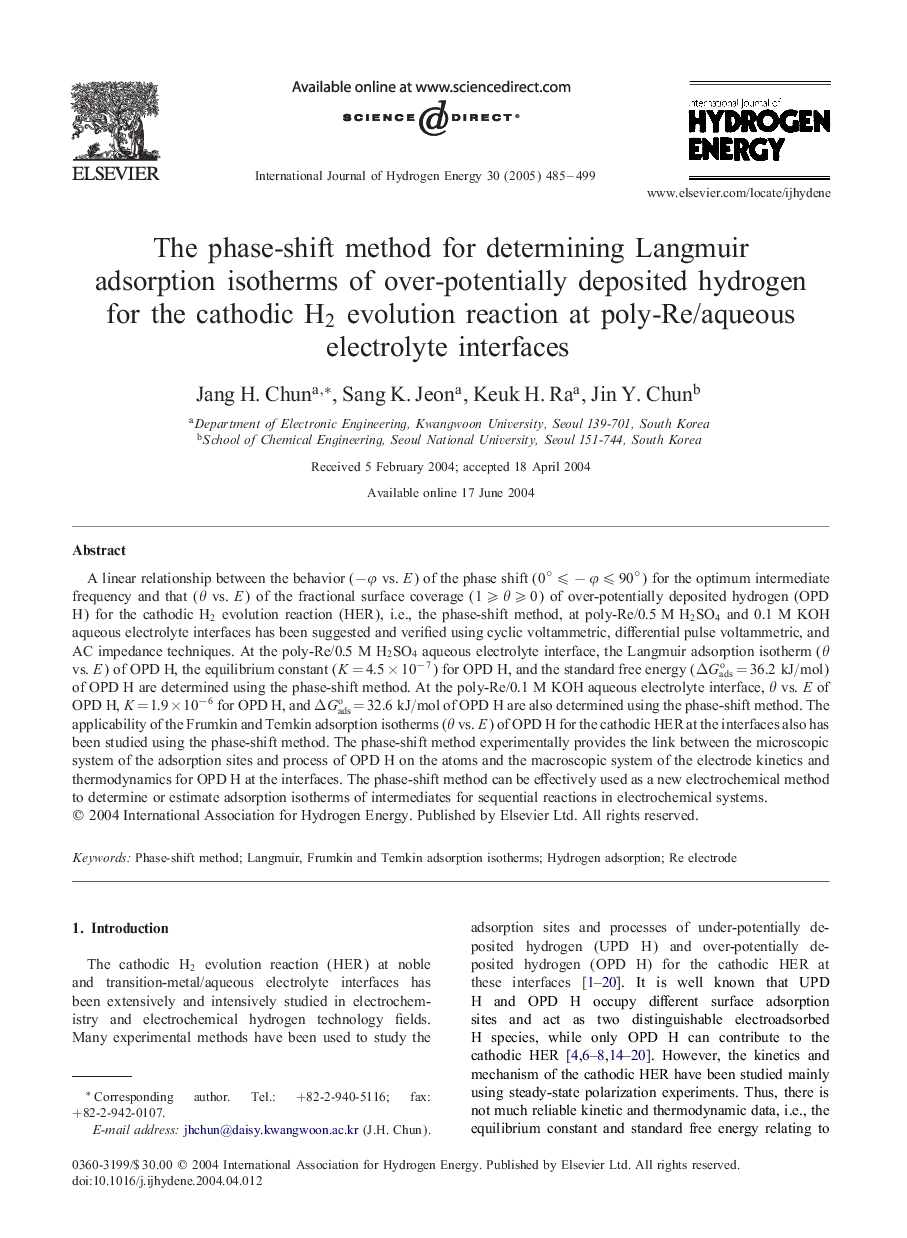| Article ID | Journal | Published Year | Pages | File Type |
|---|---|---|---|---|
| 9759318 | International Journal of Hydrogen Energy | 2005 | 15 Pages |
Abstract
A linear relationship between the behavior (âÏ vs. E) of the phase shift (0°⩽âÏ⩽90°) for the optimum intermediate frequency and that (θ vs. E) of the fractional surface coverage (1⩾θ⩾0) of over-potentially deposited hydrogen (OPD H) for the cathodic H2 evolution reaction (HER), i.e., the phase-shift method, at poly-Re/0.5MH2SO4 and 0.1M KOH aqueous electrolyte interfaces has been suggested and verified using cyclic voltammetric, differential pulse voltammetric, and AC impedance techniques. At the poly-Re/0.5MH2SO4 aqueous electrolyte interface, the Langmuir adsorption isotherm (θ vs. E) of OPD H, the equilibrium constant (K=4.5Ã10â7) for OPD H, and the standard free energy (ÎGadso=36.2kJ/mol) of OPD H are determined using the phase-shift method. At the poly-Re/0.1M KOH aqueous electrolyte interface, θ vs. E of OPD H, K=1.9Ã10â6 for OPD H, and ÎGadso=32.6kJ/mol of OPD H are also determined using the phase-shift method. The applicability of the Frumkin and Temkin adsorption isotherms (θ vs. E) of OPD H for the cathodic HER at the interfaces also has been studied using the phase-shift method. The phase-shift method experimentally provides the link between the microscopic system of the adsorption sites and process of OPD H on the atoms and the macroscopic system of the electrode kinetics and thermodynamics for OPD H at the interfaces. The phase-shift method can be effectively used as a new electrochemical method to determine or estimate adsorption isotherms of intermediates for sequential reactions in electrochemical systems.
Related Topics
Physical Sciences and Engineering
Chemistry
Electrochemistry
Authors
Jang H. Chun, Sang K. Jeon, Keuk H. Ra, Jin Y. Chun,
